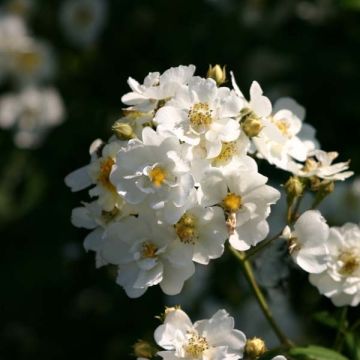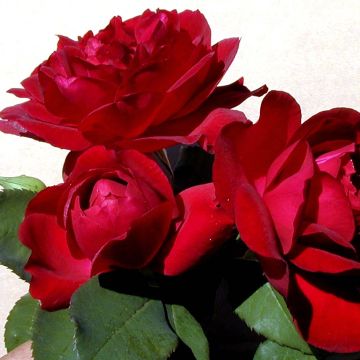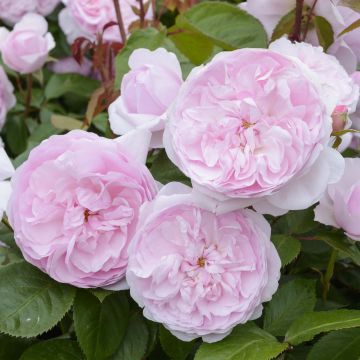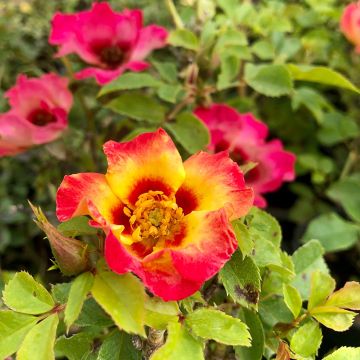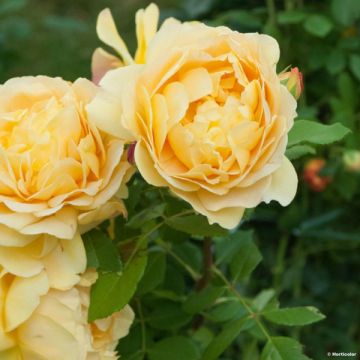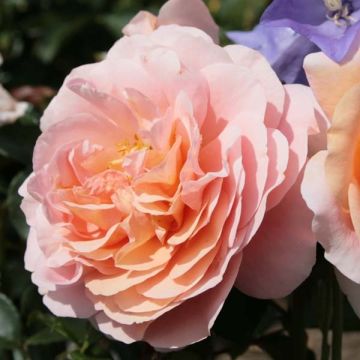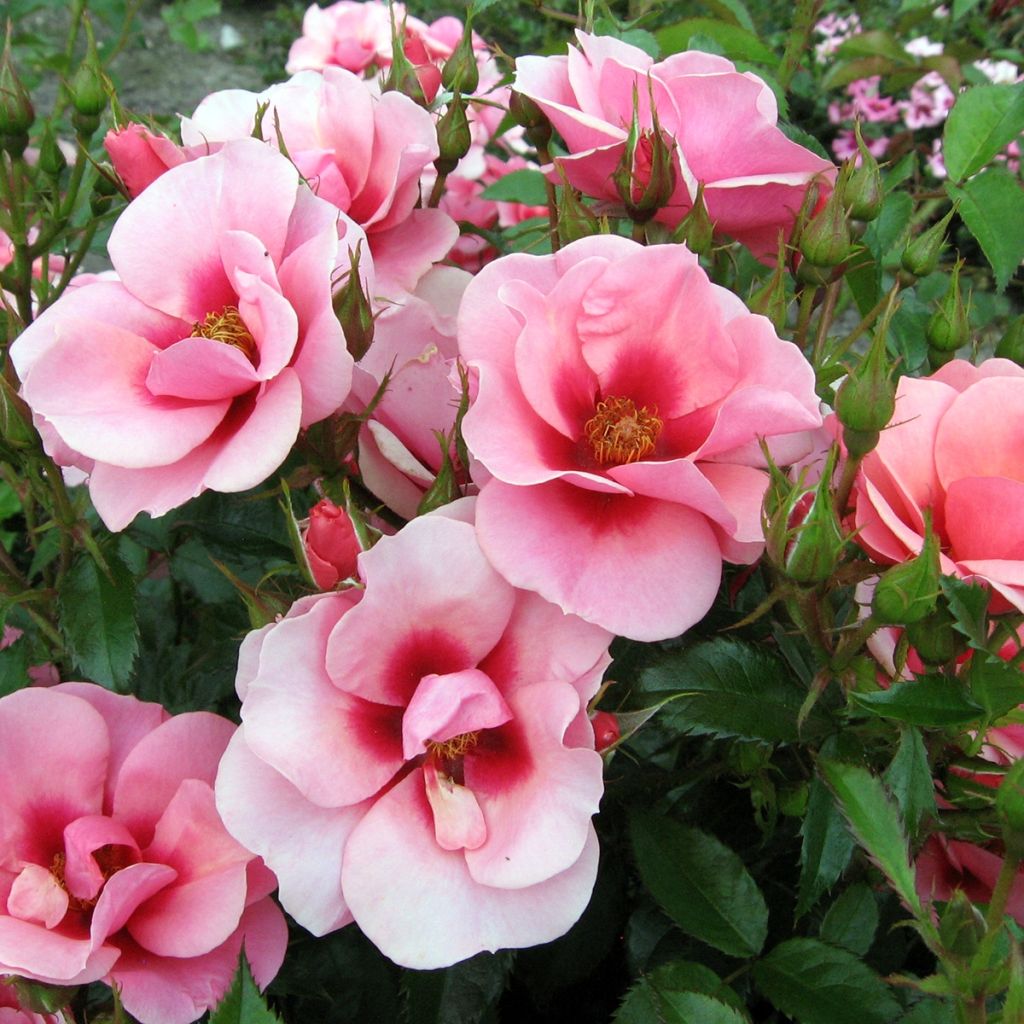

Rosa Maestro Babylon Eyes - Shrub rose
Rosa Maestro Babylon Eyes - Shrub rose
Rosa x persica Maestro Babylon Eyes ® (IPB046310)
Persian Rose, Peach Blossom Rose
This item cannot be shipped to the selected country
Delivery charge from €5.90
Delivery charge from €5.90
Delivery to Corse prohibited
More information
Schedule delivery date,
and select date in basket
This plant carries a 24 months recovery warranty
More information
We guarantee the quality of our plants for a full growing cycle, and will replace at our expense any plant that fails to recover under normal climatic and planting conditions.
From €5.90 for pickup delivery and €6.90 for home delivery
Express home delivery from €8.90.
From €5.90 for pickup delivery and €6.90 for home delivery
Express home delivery from €8.90.
Delivery to Corse prohibited: UE law prohibits the import of this plant from mainland France to Corse as part of the fight against Xylella fastidiosa. Please accept our sincere apologies.
More information

Does this plant fit my garden?
Set up your Plantfit profile →
Description
Rosa Maestro Babylon Eyes seduces with its countless clusters of semi-double, swirling flowers in a pretty fresh pink adorned with a contrasting red-pink heart. Just like its siblings from the astonishing Babylon Eyes series, it is living proof that the queen of flowers still has the power to surprise us. This hybrid is derived, among others, from the mythical Persian rose, with an early, abundant, and perpetual flowering, great robustness, and good natural resistance to rose diseases. The plant tolerates drought well, and its beautiful glossy foliage enhances the flowers. This compact, very pretty rose is suitable for gardens of all sizes and works well in a large pot.
Rosa Maestro Babylon Eyes (IPB046310) descends, among others, from a wild rose discovered in 1784 by the botanist André Michaux in the Zagros Mountains, straddling Iran and Iraq. The unique feature of its bicoloured flowers has since prompted rose breeders to attempt hybridisation with other species and varieties. After years of research and selection, very interesting new cultivars have emerged throughout Europe. 'Maestro Babylon Eyes', launched in 2019, is one of these varieties with exotic charm, still little known. It is an upright, bushy shrub forming a ball no more than 60-70 cm in all directions. Its branches are moderately thorny and adorned with small, fairly dark green, healthy leaves with a slight shine. The flowering starts quite early, in May-June, sometimes as early as March-April in warm climates. It is abundant and regularly renews until September-October, if the soil is not too dry in mid-summer. The semi-open cup-shaped flowers measure 5 to 8 cm in diameter and are loved by bees. Their pink colour remains relatively stable, barely fading over time, unlike many other Babylon Eyes roses. The heart of the flower changes from dark pink to almost red. The plant is leafless in winter.
Exotic, hardy, and drought-tolerant Maestro Babylon Eyes is a rose with many advantages, that will seduce container gardeners or those struggling with dry soil in summer and frozen soil in winter. It can be grown from north to south, in a large border, in a bed, or in a large rockery. Babylon Eyes roses can be mixed with each other and with many other plants such as garden irises, lavenders, cistus, rosemary, and catmints in dry soil. In moister soil, it can be accompanied, for example, by pink or white foxgloves, catmints, or pretty grasses like Muhlenbergia capillaris or Stipa capillata. On the terrace or balcony, it can be surrounded by cineraria maritima, alstroemerias, agapanthus, or carnations for example.
Interplant creation launched in 2016 - The Sweet Babylon Eyes rose was awarded at the 17th International New Roses Competition in Barcelona in 2017 as the most promising new variety.
Report an error about the product description
Plant habit
Flowering
Foliage
Botanical data
Rosa
x persica
Maestro Babylon Eyes ® (IPB046310)
Rosaceae
Persian Rose, Peach Blossom Rose
Cultivar or hybrid
Other Roses A to Z
Planting and care
The Maestro Babylon Eyes rose is undemanding in terms of soil type, but it dislikes heavy and suffocating soils. It thrives in sufficiently sunny regions, up to 1000 m altitude, and is not susceptible to diseases, cold, or drought once well established (a very dry soil in summer will dry out the flowering). It adapts to all gardens, as long as it is planted well! Plant it in well-worked and drained ordinary soil in a sunny location. Remove faded flowers to promote new flowering. At the end of winter, in February-March, prune moderately. It may be a good idea to remove dead wood in winter.
Roses are often stained or unsightly at the end of summer, but this is not a problem for their development. These stains are not harmful to the rose, it is a natural phenomenon.
Planting period
Intended location
Care
-
, onOrder confirmed
Reply from on Promesse de fleurs
Haven't found what you were looking for?
Hardiness is the lowest winter temperature a plant can endure without suffering serious damage or even dying. However, hardiness is affected by location (a sheltered area, such as a patio), protection (winter cover) and soil type (hardiness is improved by well-drained soil).

Photo Sharing Terms & Conditions
In order to encourage gardeners to interact and share their experiences, Promesse de fleurs offers various media enabling content to be uploaded onto its Site - in particular via the ‘Photo sharing’ module.
The User agrees to refrain from:
- Posting any content that is illegal, prejudicial, insulting, racist, inciteful to hatred, revisionist, contrary to public decency, that infringes on privacy or on the privacy rights of third parties, in particular the publicity rights of persons and goods, intellectual property rights, or the right to privacy.
- Submitting content on behalf of a third party;
- Impersonate the identity of a third party and/or publish any personal information about a third party;
In general, the User undertakes to refrain from any unethical behaviour.
All Content (in particular text, comments, files, images, photos, videos, creative works, etc.), which may be subject to property or intellectual property rights, image or other private rights, shall remain the property of the User, subject to the limited rights granted by the terms of the licence granted by Promesse de fleurs as stated below. Users are at liberty to publish or not to publish such Content on the Site, notably via the ‘Photo Sharing’ facility, and accept that this Content shall be made public and freely accessible, notably on the Internet.
Users further acknowledge, undertake to have ,and guarantee that they hold all necessary rights and permissions to publish such material on the Site, in particular with regard to the legislation in force pertaining to any privacy, property, intellectual property, image, or contractual rights, or rights of any other nature. By publishing such Content on the Site, Users acknowledge accepting full liability as publishers of the Content within the meaning of the law, and grant Promesse de fleurs, free of charge, an inclusive, worldwide licence for the said Content for the entire duration of its publication, including all reproduction, representation, up/downloading, displaying, performing, transmission, and storage rights.
Users also grant permission for their name to be linked to the Content and accept that this link may not always be made available.
By engaging in posting material, Users consent to their Content becoming automatically accessible on the Internet, in particular on other sites and/or blogs and/or web pages of the Promesse de fleurs site, including in particular social pages and the Promesse de fleurs catalogue.
Users may secure the removal of entrusted content free of charge by issuing a simple request via our contact form.
The flowering period indicated on our website applies to countries and regions located in USDA zone 8 (France, the United Kingdom, Ireland, the Netherlands, etc.)
It will vary according to where you live:
- In zones 9 to 10 (Italy, Spain, Greece, etc.), flowering will occur about 2 to 4 weeks earlier.
- In zones 6 to 7 (Germany, Poland, Slovenia, and lower mountainous regions), flowering will be delayed by 2 to 3 weeks.
- In zone 5 (Central Europe, Scandinavia), blooming will be delayed by 3 to 5 weeks.
In temperate climates, pruning of spring-flowering shrubs (forsythia, spireas, etc.) should be done just after flowering.
Pruning of summer-flowering shrubs (Indian Lilac, Perovskia, etc.) can be done in winter or spring.
In cold regions as well as with frost-sensitive plants, avoid pruning too early when severe frosts may still occur.
The planting period indicated on our website applies to countries and regions located in USDA zone 8 (France, United Kingdom, Ireland, Netherlands).
It will vary according to where you live:
- In Mediterranean zones (Marseille, Madrid, Milan, etc.), autumn and winter are the best planting periods.
- In continental zones (Strasbourg, Munich, Vienna, etc.), delay planting by 2 to 3 weeks in spring and bring it forward by 2 to 4 weeks in autumn.
- In mountainous regions (the Alps, Pyrenees, Carpathians, etc.), it is best to plant in late spring (May-June) or late summer (August-September).
The harvesting period indicated on our website applies to countries and regions in USDA zone 8 (France, England, Ireland, the Netherlands).
In colder areas (Scandinavia, Poland, Austria...) fruit and vegetable harvests are likely to be delayed by 3-4 weeks.
In warmer areas (Italy, Spain, Greece, etc.), harvesting will probably take place earlier, depending on weather conditions.
The sowing periods indicated on our website apply to countries and regions within USDA Zone 8 (France, UK, Ireland, Netherlands).
In colder areas (Scandinavia, Poland, Austria...), delay any outdoor sowing by 3-4 weeks, or sow under glass.
In warmer climes (Italy, Spain, Greece, etc.), bring outdoor sowing forward by a few weeks.




































